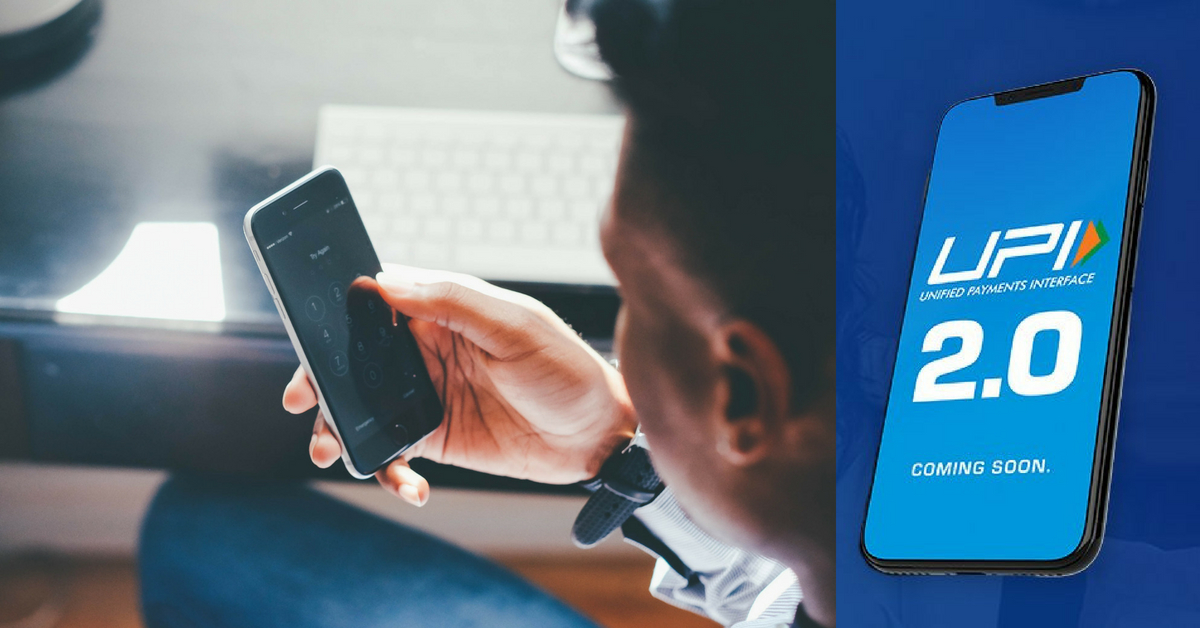RBI Unveils UPI 2.0: 5 Key Features of The Upgraded Platform That Can Benefit You!
Looking at its success, the NPCI has been in the works to release an updated UPI called the UPI 2.0, which was launched on August 16, 2018.

It was in April 2016 when the Unified Payments Interface (UPI) was launched. Soon enough, it was adopted by payment applications like PayTm, PhonePe, Google Tez and many others.
Launched by the National Payments Corporation of India (NPCI), UPI could transact money 24×7 with just a bank account and a phone number.
With such ease, nearly 58 crore transactions, worth Rs 73,132 crore were conducted by February 2018. Looking at its success, the NPCI has been in the works to release an updated UPI called the UPI 2.0, which was launched on August 16, 2018, with an array of new features that can benefit both the consumer and the retailer.
Here are few of the key features that are embedded in the new UPI 2.0.

LINKING OF OD ACCOUNT
In the earlier UPI, overdraft or OD accounts couldn’t be linked to the payment interface. But with the new update, users will be able to link their overdraft accounts, meaning they can continue to transact money even if the account doesn’t have sufficient funds.
“Customers will be able to transact instantly, and all benefits associated with OD account shall be made available to the users. UPI 2.0 will serve as an additional digital channel to access OD account,” said NPCI in a statement.
ONE-TIME MANDATE
One-time mandate is a useful feature for both consumers and retailers alike. This feature allows the users to block an amount for payment which can be paid later after the goods for the payment have been delivered.
This is basically like pay-on-delivery method, where the amount is pre-authorised by the user to be paid at a later date.
The one-time mandate feature would be soon be integrated into websites like Flipkart and Amazon where the consumer will have to create the mandate on the merchant’s website.
INVOICES IN INBOX
This feature allows merchants and individuals to send an invoice along with the payment request. This will directly be shown in the inbox and allow the users to verify credibility and create transparency.
SIGNED INTENT AND QR
While scanning QR codes of merchants, this feature allows customers to check the authenticity of merchants and informs them whether the merchant is a verified UPI merchant or not.
In this way, with verified merchants, transactions are processed faster as app passcode is not required in the case of signed intent.
INCREASE IN TRANSACTION LIMIT
To expand the UPI 2.0 regarding application and usage across various fields, the transaction limit for the updated version has even been upped to Rs 2 lakhs.
For now, the the NCPI says this is for specific cases only.
CEO and Co-Founder of Razorpay, a payments company, Harshil Mathur, told YourStory, “We are expecting to see a surge of UPI transactions in areas such as hotel booking, flight ticket purchases, among others. Currently, UPI drives about 8-9 percent of our transaction volumes.”
(Edited by Shruti Singhal)
Hey, you may also like: Applying For a Visa? Here’s Why You Should be Careful About Your Social Media Posts!
Like this story? Or have something to share?
Write to us: [email protected]
Connect with us on Facebook and Twitter.
If you found our stories insightful, informative, or even just enjoyable, we invite you to consider making a voluntary payment to support the work we do at The Better India. Your contribution helps us continue producing quality content that educates, inspires, and drives positive change.
Choose one of the payment options below for your contribution-
By paying for the stories you value, you directly contribute to sustaining our efforts focused on making a difference in the world. Together, let’s ensure that impactful stories continue to be told and shared, enriching lives and communities alike.
Thank you for your support. Here are some frequently asked questions you might find helpful to know why you are contributing?


This story made me
-
97
-
121
-
89
-
167











